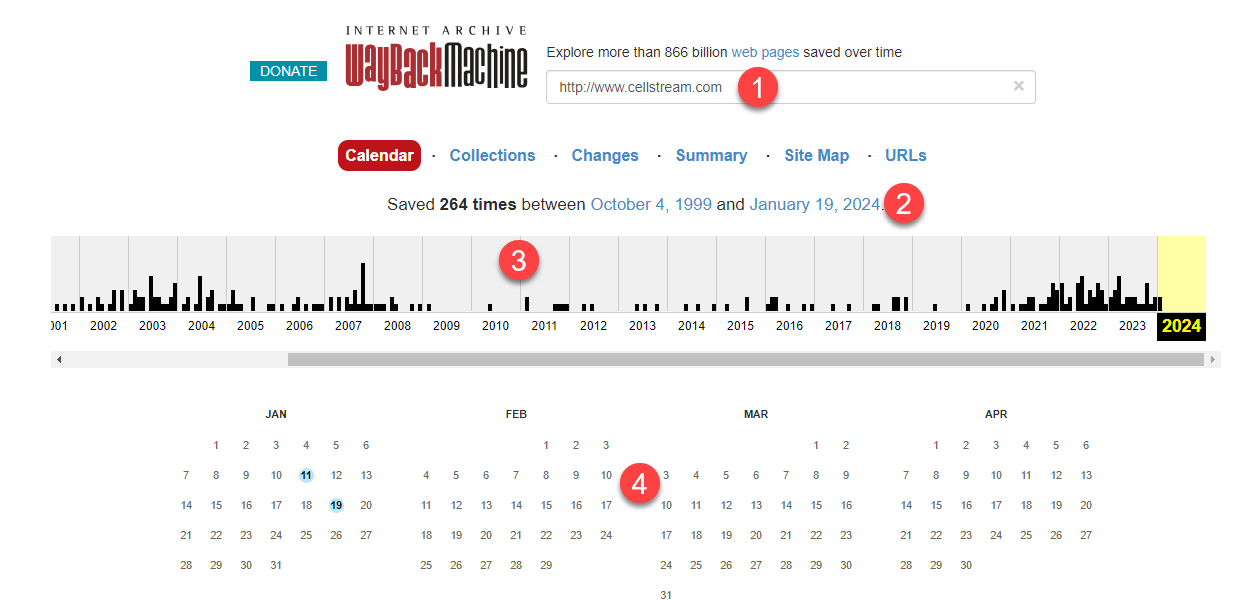Let’s say you wanted to view our site back in 2001. Could you do it? The answer is yes!
That’s right, someone has been crawling the web called the Wayback Machine (https://web.archive.org).
The Wayback Machine is a digital archive of the World Wide Web and other information on the Internet created by the Internet Archive, a non-profit organization. It allows users to browse through over 477 billion web pages archived from 1996 to the present day. The primary purpose of the Wayback Machine is to provide access to historical versions of websites, offering a glimpse into the evolution of the internet and preserving web content that might otherwise be lost due to website changes or deletions.
Users can enter a URL into the search bar on the Wayback Machine’s website to view archived versions of that website captured over time. The archive captures not only the text and images of web pages but also multimedia content such as videos and audio files. Additionally, the Wayback Machine offers features like keyword searching and a calendar view to easily navigate through archived snapshots of websites. It serves as a valuable tool for researchers, historians, and the general public to explore the internet’s past and track the development of websites and online content.
Here is what their web page looks like:

You simply type the URL into the the box (1), and you get:

I truncated the output, but you get the idea.
(2) is the number of times the system has archived the web site over the dates shown.
(3) Is a timeline of those saves
(4) is a calendar version of the timeline. You can select any of the markers on the timeline, click on it and the calendar will indicate the dates that a snapshot was taken. You can then select one of the dates from the calendar, and presto, a view of that web site appears. You can navigate through the web site pretty well, although some output will not be perfect.
The Wayback Machine serves a variety of use cases across different sectors:
- Historical Research: Historians and researchers utilize the Wayback Machine to access archived versions of websites, allowing them to study the evolution of online content, track changes in web design and functionality, and analyze shifts in cultural and societal attitudes reflected in internet content over time.
- Legal and Intellectual Property: Lawyers, copyright experts, and intellectual property professionals may use the Wayback Machine to gather evidence for legal cases involving copyright infringement, trademark disputes, or website ownership disputes. Archived web pages can provide crucial evidence of the content or appearance of a website at a specific point in time.
- Website Preservation: Website owners and developers may use the Wayback Machine to periodically archive their own websites to preserve past versions or to ensure that their content remains accessible even if their website experiences downtime or is removed from the internet.
- Education and Academic Research: Educators and students leverage the Wayback Machine as a resource for teaching and learning about internet history, digital culture, and the evolution of online communication. It provides firsthand access to historical web content for research projects, assignments, and academic exploration.
- Journalism and Media Analysis: Journalists, media analysts, and fact-checkers utilize the Wayback Machine to verify the accuracy of online information, track changes in news coverage over time, and investigate the spread of misinformation or disinformation campaigns on the internet.
- Cybersecurity and Digital Forensics: Cybersecurity professionals and digital forensics experts may use the Wayback Machine to investigate security breaches, analyze historical website configurations for vulnerabilities, and reconstruct timelines of online activities for forensic investigations.
- Cultural and Nostalgic Exploration: Everyday users may visit the Wayback Machine out of curiosity or nostalgia to revisit old versions of their favorite websites, explore discontinued web services, or reminisce about past internet trends and memes.
Overall, the Wayback Machine plays a crucial role in preserving internet history, facilitating research, and promoting transparency and accountability in the digital age.
How cool is that?

